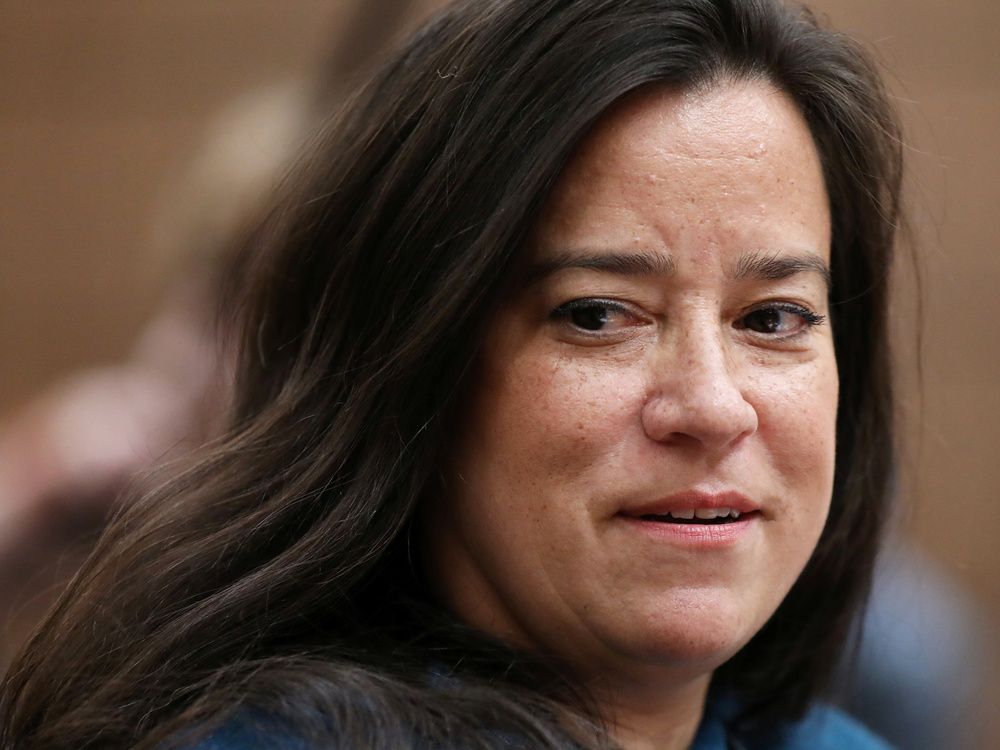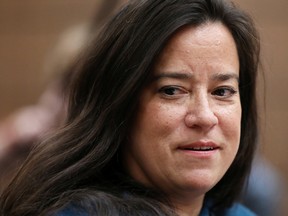‘You can show government’: Wilson-Raybould calls on business to lead reconciliation efforts with First Nations

Current management of natural resources in Canada is not clear or consistent, she said

Article content
Jody Wilson-Raybould used her first in-person talk since leaving Parliament last year to call on more people in industry to play the role of “in-betweeners,” who bridge the political gap between champions of reconciliation with First Nations and those who don’t fully understand colonialism’s legacy.
Advertisement
Story continues below
This advertisement has not loaded yet, but your article continues below.
Article content
“If you have an idea to make something better, even if it goes against the grain of a company philosophy, say it,” Wilson-Raybould, the first Indigenous justice minister, said at a mining conference in Vancouver, on Feb. 1. “Because the company philosophy, the mandates, the key speaking notes of an organization and management need to be challenged — that’s the role I envision as an in-betweener.”
Wilson-Raybould has emerged as an important critic of current attempts at reconciliation, which she describes as superficial. She is especially critical of her former boss, who demoted her to minister of veterans affairs in 2018 amid the SNC-Lavalin scandal. The bitterness remains, as Wilson-Raybould took several shots at Trudeau for practicing “performative reconciliation” during her roughly 45-minute breakfast speech at the Association of Mineral Exploration’s Roundup 2022 conference.
Advertisement
Story continues below
This advertisement has not loaded yet, but your article continues below.
Article content
“Lowering the flag, or wearing a T-shirt is described in the same way as ensuring children are lifted out of poverty, or a nation’s jurisdiction is recognized…,” she said, adding, “Let’s be clear governments are doing this the most.”
Wilson-Raybould’s choice of venue for her first major speech since quitting politics last year reflects the growing role of business in advancing reconciliation. Indigenous leaders, including Carol-Ann Hilton, head of the Indigenonmics Institute, have begun pressing the point that the courts have made clear that historic treaty rights will be upheld, so it’s in the interest of executives and shareholders to compromise with Indigenous communities.
In general, Wilson-Raybould refrained from directly criticizing industry’s approach to reconciliation, and even commended industry for moving towards partnerships with Indigenous communities on resource projects. Still, she urged her audience to understand how important it is for First Nations to self-govern their own affairs.
Advertisement
Story continues below
This advertisement has not loaded yet, but your article continues below.
Article content
“It is not aspirational, it is fundamentally necessary,” she said.
Wilson-Raybould delved into specific policy areas that she said needed more work, including the current approaches to resource management by the federal government and the provinces.
Too often, disputes end up in courts, and the process is not consistent or clear, she said. Wilson-Raybould said there can only be three functional models for resource project development: the Canadian government and relevant Indigenous communities agree on who has jurisdiction to regulate a project, and designate that government as the authority; the Canadian government and relevant Indigenous community form a joint-decision making body to regulate a resource project; or, both First Nations and the government regulate independently, but agree on how to resolve any differences in decisions.
Advertisement
Story continues below
This advertisement has not loaded yet, but your article continues below.
Article content
Canada should to choose one of the three, she said.
-

B.C. Supreme Court ruling in infringement case to ‘open up broad range of remedies’ for First Nations
-

Group seeks 100% Indigenous ownership of Trans Mountain pipeline
-

‘Confusing, convoluted mess’: Ring of Fire set for speedy development under new owner, but challenges loom
-

B.C. court ruling could mean First Nations consent needed for any new project on historic treaty lands
“There are iterations under each of these models but there are really only three, and all of them, if designed properly, are more clear, certain and predictable than the status quo,” Wilson-Raybould said.
Her view of the mining industry writ large was far from rosy, describing it as “an industry that’s based on colonial laws that need to change.”
Again and again, she said everyone needs to be asking what they can do to advance reconciliation.
“You can show the government how to build real relationships and trust,” Wilson-Raybould said.
Financial Post
• Email: [email protected] | Twitter: GabeFriedz
Listen to Down to Business for in-depth discussions and insights into the latest in Canadian business, available wherever you get your podcasts. Check out the latest episode below:
Advertisement
Story continues below
This advertisement has not loaded yet, but your article continues below.









